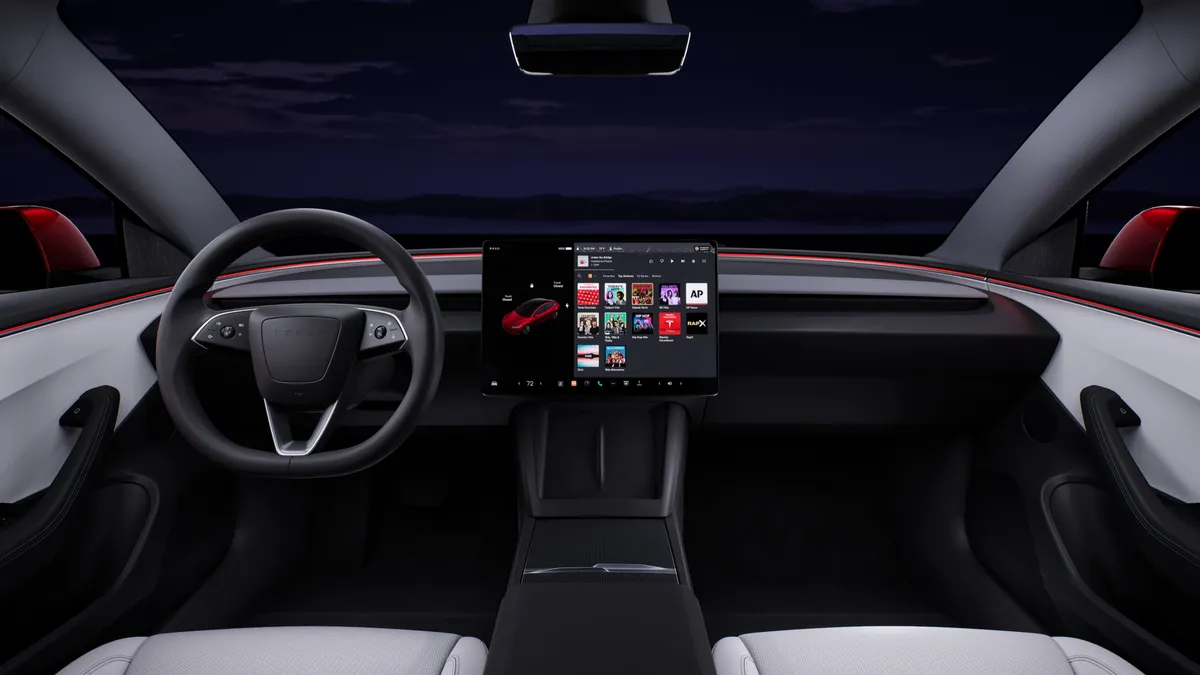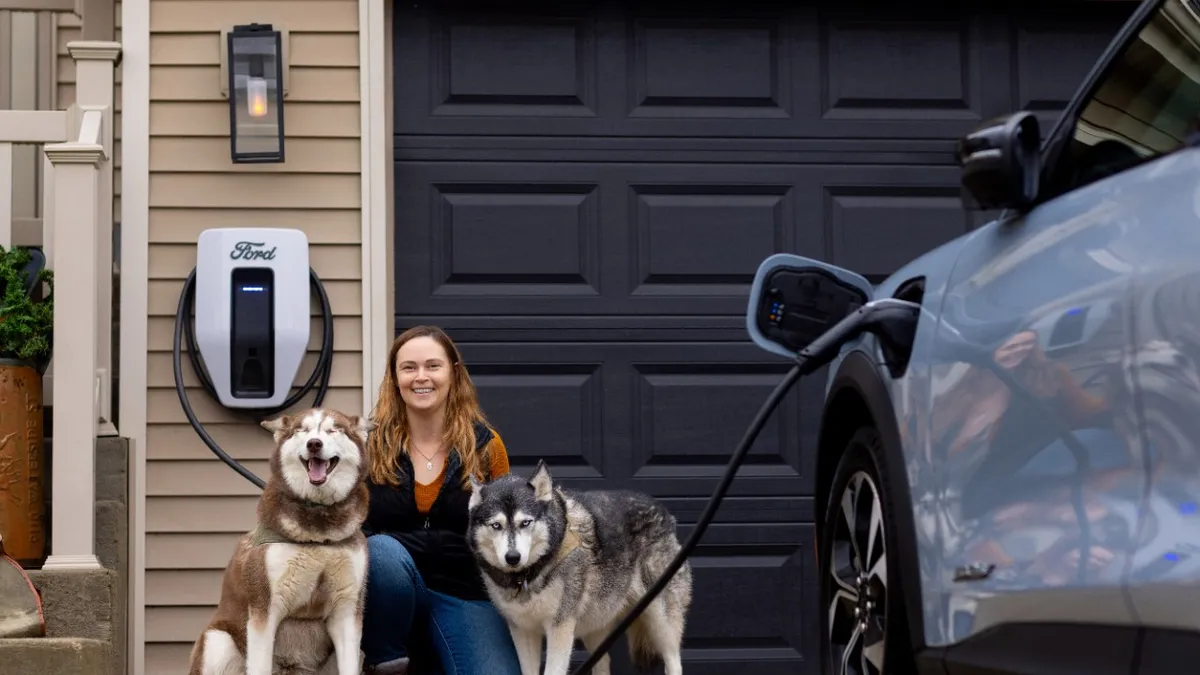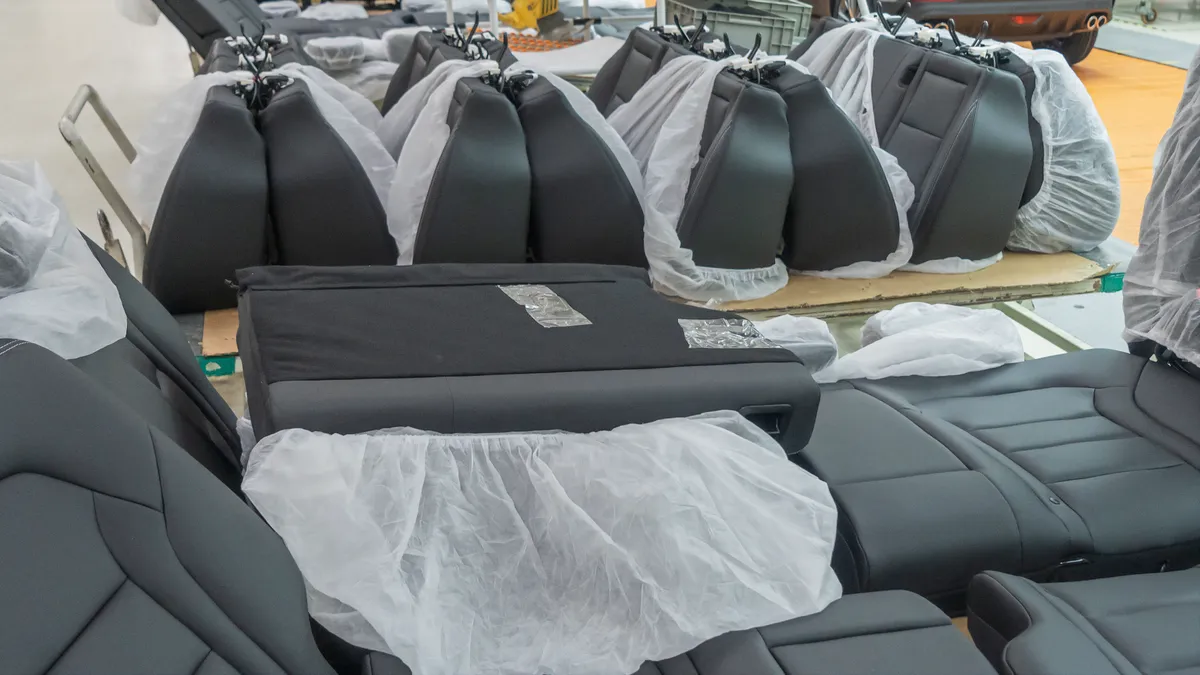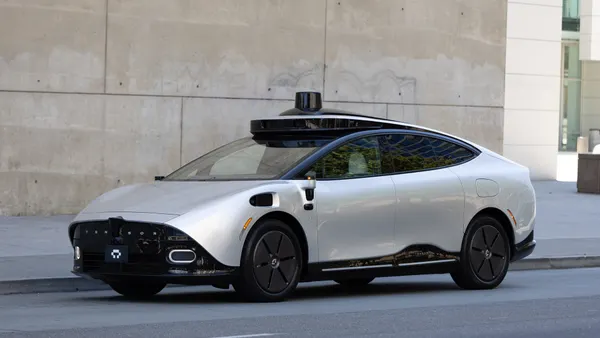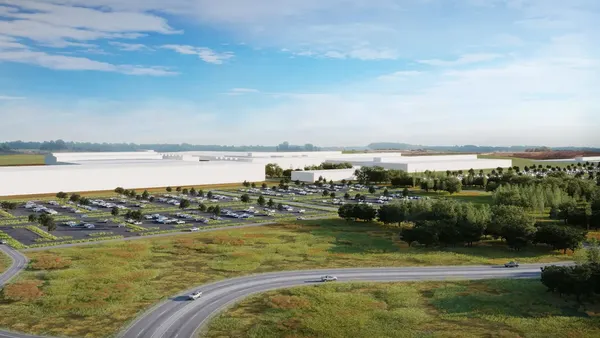Dive Brief:
- The National Highway Traffic Safety Administration’s Office of Defects Investigation opened a preliminary evaluation on Oct. 17 for an estimated 2.4 million Tesla vehicles over the safety of the company's Full Self-Driving technology.
- The probe comes after the NHTSA identified four collisions that occurred in low-visibility conditions while the FSD feature was active. A Tesla vehicle fatally struck a pedestrian in one incident last November.
- Although Tesla CEO Elon Musk previously touted the automaker’s FSD technology and Autopilot’s ability to perform better than a human driver, regulators are closely monitoring its rollout after being linked to numerous accidents with injuries and fatalities over the years.
Dive Insight:
The NHTSA investigations surrounding the safety of Tesla’s Autopilot and FSD have been ongoing. Since June 2022, the NHTSA’s ODI identified at least 13 crashes of Tesla vehicles resulting in fatalities and serious injuries. However, according to a 2023 Washington Post analysis of NHTSA data, Tesla’s automated driving features are linked to over 700 crashes and at least 19 deaths since 2019.
FSD is an optional feature for Tesla vehicles that costs $8,000, according to Tesla’s website.
Among the focus areas of the latest NHTSA safety probe is a preliminary evaluation of the ability of Tesla’s FSD hardware to detect and respond to reduced roadway visibility conditions, such as sun glare or fog. The agency’s ODI will also look into whether similar FSD crashes have occurred in reduced visibility conditions, as well as contributing circumstances for any crashes that may have occurred.
Tesla vehicles equipped with FSD use cameras and AI-powered computer vision software to identify objects and predict their behavior, including pedestrians, cyclists and other vehicles. However, these systems are not entirely fail-safe and developers of the technology typically enhance object detection capabilities using radar and lidar.
The NHTSA investigation will also review Tesla's previous FSD software updates or modifications to the system that may have impacted its performance in low visibility conditions. The probe will also assess the timing, purpose, and capabilities of any prior updates made by Tesla, including their safety impacts, according to the NHTSA.
In February 2023, Tesla recalled 362,000 FSD Beta-equipped vehicles to update software following a previous NHTSA safety investigation. The agency issued the recall after concluding the system did not adequately adhere to traffic safety laws and could lead to crashes.
Outside of the investigation into the object detection capabilities of Tesla's FSD in low-visibility conditions, the NHTSA previously investigated its potential misuse by drivers. The NHTSA concluded that driver misuse of Autopilot played an apparent role in crashes while it was active, which led to the largest recall in Tesla history.
As a result of those NHTSA’s findings, Tesla issued a recall for around 2 million vehicles equipped with its standard “Autosteer” lane keep assist feature over concerns that drivers could misuse it. The update included adding “additional controls and alerts” to prompt drivers to better supervise the system when it’s active, such as providing warnings to drivers to keep their hands on the steering wheel and eyes on the road.
Despite Musk’s confidence in Tesla’s autonomous driving technology, the company includes a warning on its website that FSD is a “hands-on assistance feature,” requiring drivers to be ready to immediately take over control of the vehicle if prompted. Tesla’s Model Y owners manual also includes a warning that reads, “failure to follow these instructions could cause damage, serious injury or death.”



